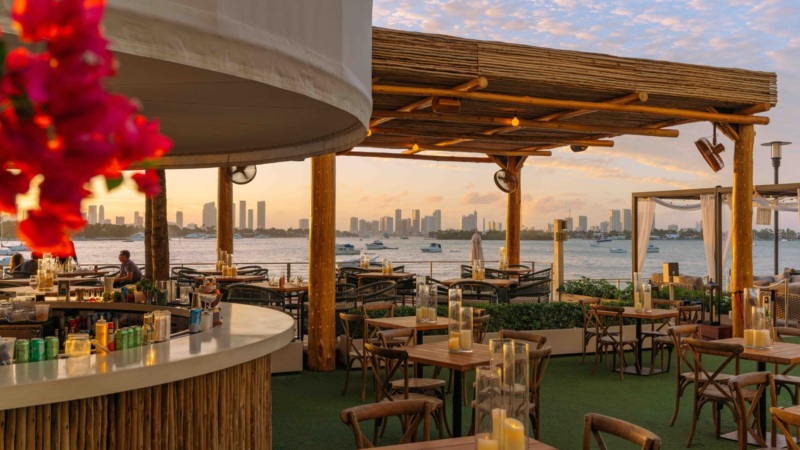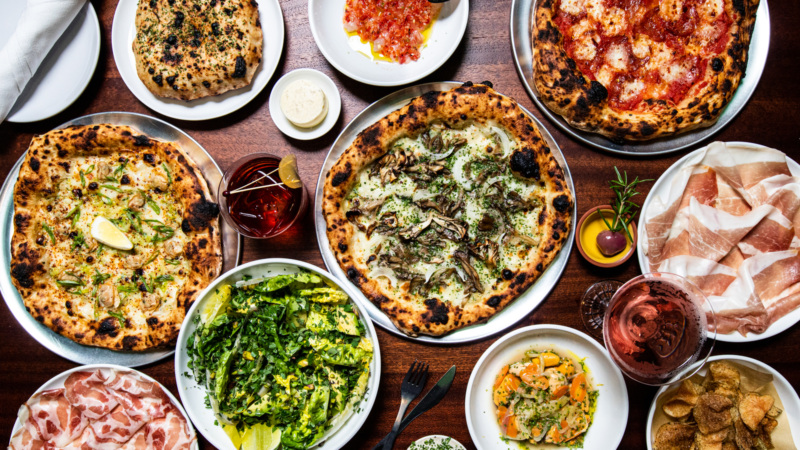
How Los Félix Builds Sustainability Into Each Dish On The Menu
The lush surroundings of Coconut Grove seem a fitting home for one of Florida’s most sustainable restaurants. The Grove’s signature banyan trees and tropical foliage give you an instant appreciation for planet Earth, and that appreciation extends into everything you’ll find at Los Félix. The Mesoamerican, corn-driven sidewalk restaurant puts sustainable practices into its entire menu, where you’ll see that the commitment to flavor is matched by a dedication to earth-friendly practices.
Los Félix’s work isn’t going unnoticed, as this past year it was among the first recipients of Michelin’s Green Star, awarded to restaurants with outstanding practices in sustainability. We chatted with co-owners Josh Hackler and chef Sebastián Vargas, who broke down exactly what Los Félix is doing to preserve the planet, and the dishes that exemplify it best.


1. The kitchen works with local fishermen.
Crudos and Day’s Catch
You’ll always find fresh seafood on Los Félix’s menu, but the specific fish in its seafood dishes isn’t consistent. That’s because Vargas bases those dishes on what the local fishermen have caught, not what the menu demands.
“With [our suppliers] it’s more like they call me and say, ‘Hey, Sebastián, I got 50 pounds of wahoo, you gotta take it!’ And I say, ‘OK, amazing!” he says. “It’s not, ‘Hey, I need the snapper. I need the sea bass.’ It’s more like, ‘Hey, what do you have?’”
Using whatever the local suppliers have on hand ensures Los Félix keeps its carbon footprint small, so they don’t need to source fish from far away for specific dishes. As such, Vargas must keep his seafood creations adaptable to different fish, like the crudos made with guanabana, pickled pineapple, finger limes, and an avocado emulsion. The bright, citrus flavors are versatile enough to blend with almost any light fish, making the restaurant’s crudos a consistent hit.
The Day’s Catch gives guests the chance to try whatever is fresh that day, grilled in a banana leaf and served with tortillas as a sort of DIY fish taco. Vargas says its popularity is due in large part to how interactive the experience is, and how it varies depending on what the boats brought in.

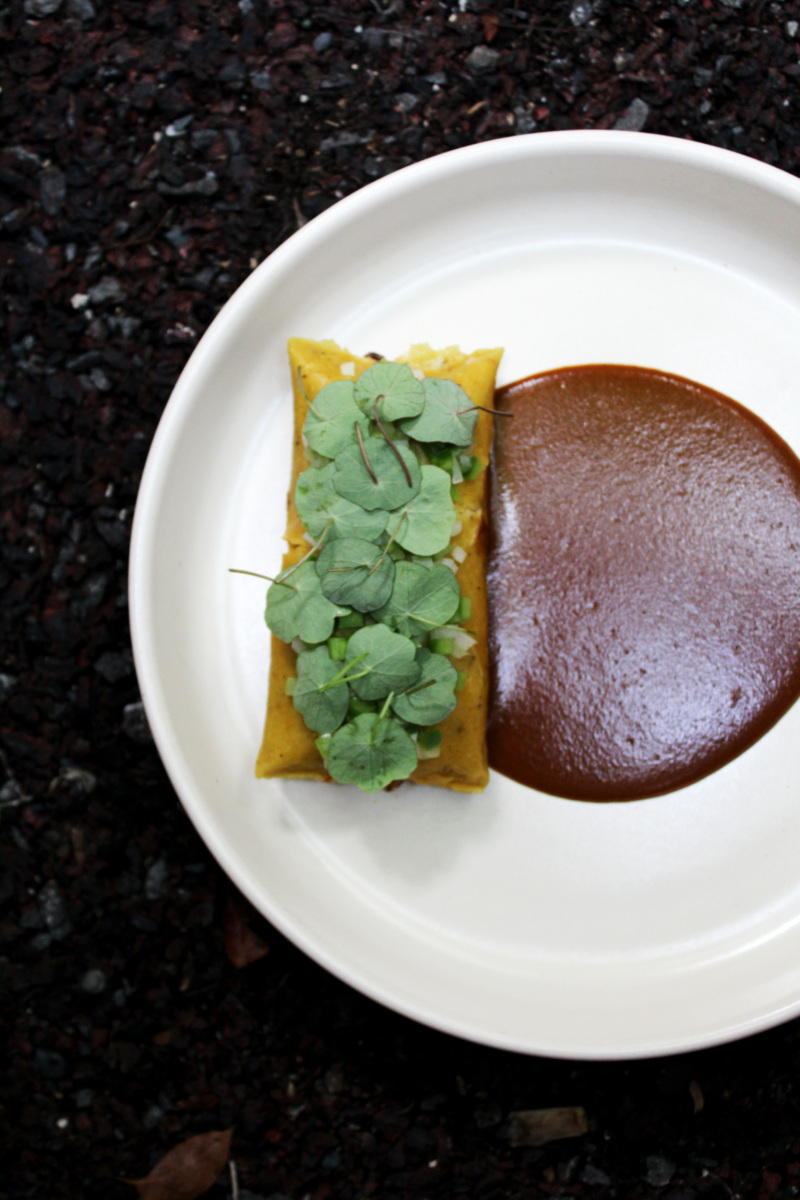
2. They also exclusively use grass-fed beef.
Grass-fed short rib
The benefits of eating grass-fed beef versus grain-fed beef are many, including a lower overall fat content and more healthy Omega-3 fatty acids. Los Félix exclusively uses grass-fed beef in its dishes, working closely with local supplier Miami Purveyors to find the highest quality meat. Much of the beef comes from Niman Ranch — which is actually not a ranch but a collection of family-run farms across America. Niman only sources humanely raised meats using sustainable farming practices, and while eating beef is never the most sustainable option, if you’re opting for red meat, Niman Ranch is as earth-friendly as it gets.
You’ll find grass-fed beef all over the menu, from the tallow used in frying the totopos to the wagyu sope. Vargas says his prize beef dish, though, is the grass-fed short rib, braised slowly and served with corn dumplings.


3. Minimizing waste is a major consideration.
Esquites
Los Félix brings a number of creative uses for unused food to its menu, but much of it starts with the corn husks discarded from its whole corn dishes.
“The husks, I dry them, I roast them, and I use them like you’d use bonito flakes,” Vargas says. “We also use it for sauces and stocks. Like the esquites, for example, they’re cooked in like a lobster bisque, but instead of using water, we use a corn broth made from the husks.”
Vargas says he also smokes fish trimmings to make smoked fish sauces and broths, minimizing waste even further. And the restaurant partners with Compost for Life, a local community initiative who, in addition to collecting restaurant food scraps for compost, also collects glass bottles, grinds them down, and uses the sand to replenish South Florida beaches.

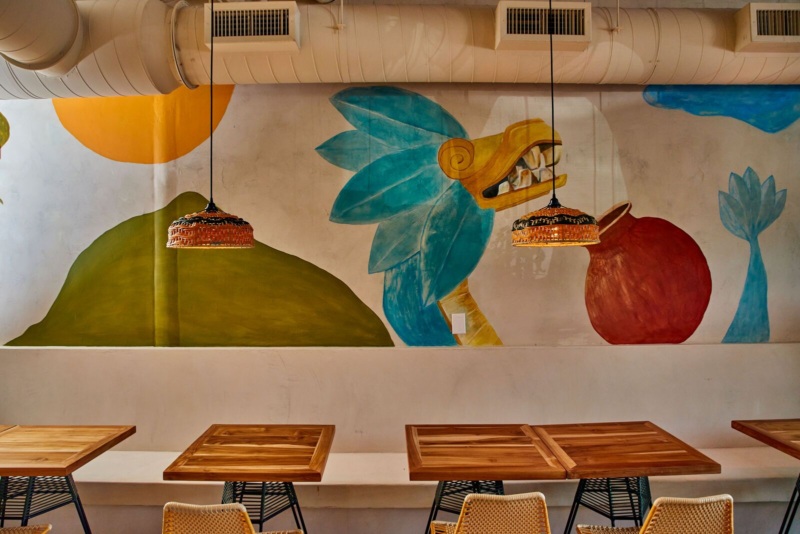
4. Eliminating seed oils can reduce water waste.
Topos
It’s argued that seed oils are a major culprit of inflammation, and Los Félix is one of the few restaurants that has taken the initiative to eliminate seed oils from its menu. That’s thanks in large part to a partnership it has with Zero Acre Farms, a company that produces a cooking oil made mainly from sugarcane. This method uses about one percent of the water used in producing olive oil, and 87% less than canola oil.
“The oil has high heat characteristics, and more omegas and polyunsaturated fats than olive oil or avocado oil,” says Hackler. “It’s like three times more expensive than conventional canola oil, but we made a determination internally that we’re going to serve people the food we’d want to eat.”
Most of the fried food at Los Félix is fried in Zero Acre’s oil, but above all, Vargas recommends the totopos, made from heirloom corn from Mexico. They are fried in a mix of grass-fed beef tallow and Zero Acre oil, giving it a rich blend of savory goodness that pairs perfectly with cool, freshly-made guacamole.


5. Sourcing ethical corn is a non-negotiable.
Arepa
If there’s one ingredient that has become synonymous with Los Félix, it’s corn. The restaurant sources corn from all over the Americas in an effort to bring more authentic Mesoamerican flavors to its menu, and in doing so, supports farmers who grow the ingredient in more sustainable ways.
“We’re working with a great company called Tamoa, who works with small families that have been growing corn for hundreds of years in Mexico,” says Hackler. “We source the corn meal for our pancakes from Guilford Mill in North Carolina, the oldest working water mill in the United States. Another company from Appalachia is Farm & Sparrow, who focuses on these almost-extinct land raises.”
Corn, Vargas says, is in almost every dish on the Los Félix menu, so picking one dish that exemplifies its philosophy to sourcing corn is impossible. But he spoke with great pride about the arepas, which use two different kinds of corn — Cateto orange flint corn and a variety of corn used in Italian polenta. The Cateto is ground and mixed with brown butter to form the arepa base, then served with grilled colossal crab and finished with a smoky corn sauce.
6. Partnering with local farms comes first.
Crispy okra
Los Félix partners with Tiny Farm in Homestead for the majority of its vegetables. And even during the summer, when the growing season in South Florida is a little slower, Los Félix adapts its menu to use what it can find locally first, before seeking produce from out-of-state.
“Summer is not the greatest for growing here in Miami, but things like eggplants and okras do great in the summer,” says Vargas. “And Tiny has a beautiful okra program that we utilize a lot.”
So seasonally, you’ll find the crispy okra on the menu, served with an avocado emulsion, corn vinegar powder, and chipotle salt.


7. Natural wines for the planet — and the palate.
Los Félix’s wine program focuses on biodynamic wines — that is, wines that use regenerative, self-contained, sustainable agriculture. This includes techniques like crop rotations to make the most efficient use of the land, animal rotation to keep land from becoming grazed over, and elimination of pesticides, herbicides, or chemicals in the winemaking process.
Like the food on the menu, the wines on the wine list come from the Americas and mostly California. Winemakers Hackler recommends include Ross Cobb, known best for pinot noir and chardonnay, and Las Jaras, whose light Glou Glou red blend comes from a berry-forward zinfandel grape that goes well with grilled meats.
Discover More
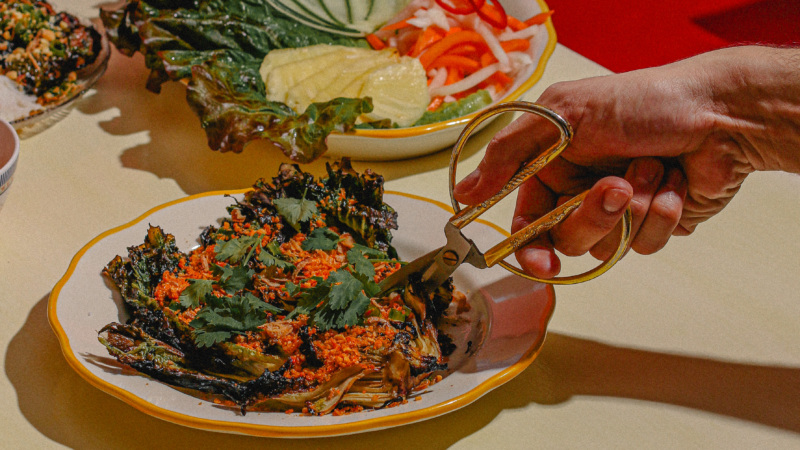
Stephen Satterfield's Corner Table






